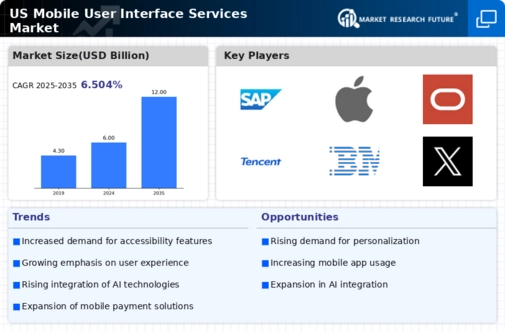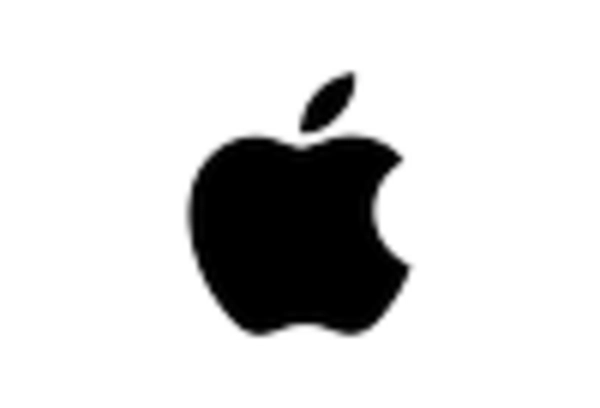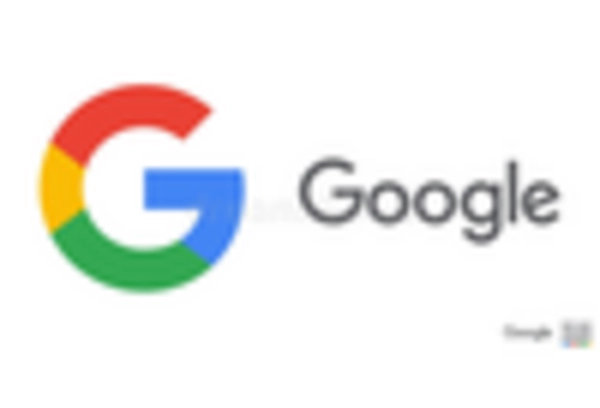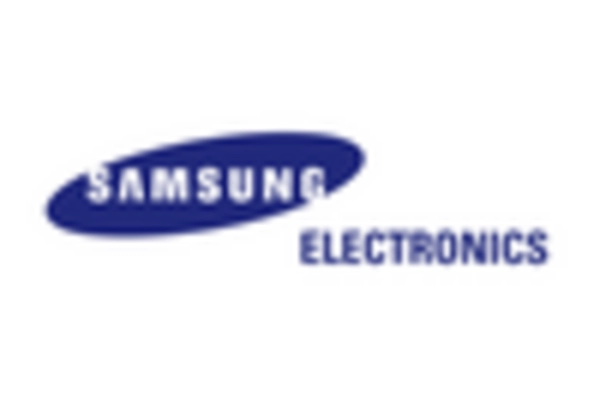Advancements in Technology
Technological advancements play a crucial role in shaping the mobile user-interface-services market. The proliferation of high-speed internet and the advent of 5G technology facilitate the development of more sophisticated applications with enhanced user interfaces. As of November 2025, it is estimated that 5G adoption in the US will reach around 50%, significantly impacting how users interact with mobile applications. This shift allows for richer graphics, faster load times, and more interactive features, which are essential for modern user experiences. Consequently, service providers are compelled to adapt their user-interface designs to leverage these technological improvements, ensuring that they meet the evolving expectations of consumers. The integration of augmented reality (AR) and virtual reality (VR) into mobile applications further underscores the need for innovative user-interface solutions.
Growing Importance of Data Privacy
In the mobile user-interface-services market, the growing importance of data privacy is becoming a significant driver. With increasing concerns over data breaches and privacy violations, consumers are demanding more transparency and control over their personal information. As of November 2025, approximately 70% of US consumers express concerns about how their data is used by mobile applications. This shift in consumer sentiment compels companies to prioritize data protection in their user-interface designs. Service providers are likely to integrate features that enhance user trust, such as clear privacy policies and user-friendly consent mechanisms. This focus on data privacy not only aligns with regulatory requirements but also serves as a competitive advantage in the mobile user-interface-services market, as businesses seek to build trust with their users.
Increased Focus on User Experience
The mobile user-interface-services market is witnessing an increased focus on user experience (UX) as a critical differentiator. Companies are beginning to understand that a well-designed user interface can significantly impact customer satisfaction and retention. Research indicates that 88% of online consumers are less likely to return to a site after a bad experience, highlighting the importance of effective UI design. As a result, businesses are investing in user testing and feedback mechanisms to refine their interfaces continually. This trend is likely to drive the demand for specialized user-interface services that prioritize UX, leading to a more competitive landscape. The emphasis on user-centric design principles is expected to shape the strategies of service providers in the mobile user-interface-services market, as they strive to create interfaces that resonate with users.
Rising Demand for Mobile Applications
The mobile user-interface-services market experiences a notable surge in demand for mobile applications across various sectors. As businesses increasingly recognize the importance of mobile platforms, the need for intuitive and engaging user interfaces becomes paramount. In 2025, the mobile application market in the US is projected to reach approximately $200 billion, indicating a robust growth trajectory. This demand drives innovation in user-interface design, compelling service providers to enhance their offerings. Companies are investing in user experience (UX) research to create interfaces that not only attract users but also retain them. The emphasis on seamless navigation and aesthetic appeal is likely to shape the future of the mobile user-interface-services market, as organizations strive to differentiate themselves in a competitive landscape.
Emergence of Cross-Platform Development
The emergence of cross-platform development tools is reshaping the mobile user-interface-services market. As businesses aim to reach a broader audience, the ability to create applications that function seamlessly across multiple platforms becomes increasingly valuable. In 2025, it is estimated that cross-platform development will account for over 30% of mobile application development in the US. This trend encourages service providers to adopt flexible user-interface designs that can adapt to various operating systems and devices. Consequently, the demand for user-interface services that specialize in cross-platform compatibility is likely to rise. This shift not only enhances user accessibility but also streamlines the development process, allowing companies to allocate resources more efficiently in the competitive landscape of the mobile user-interface-services market.

















Leave a Comment